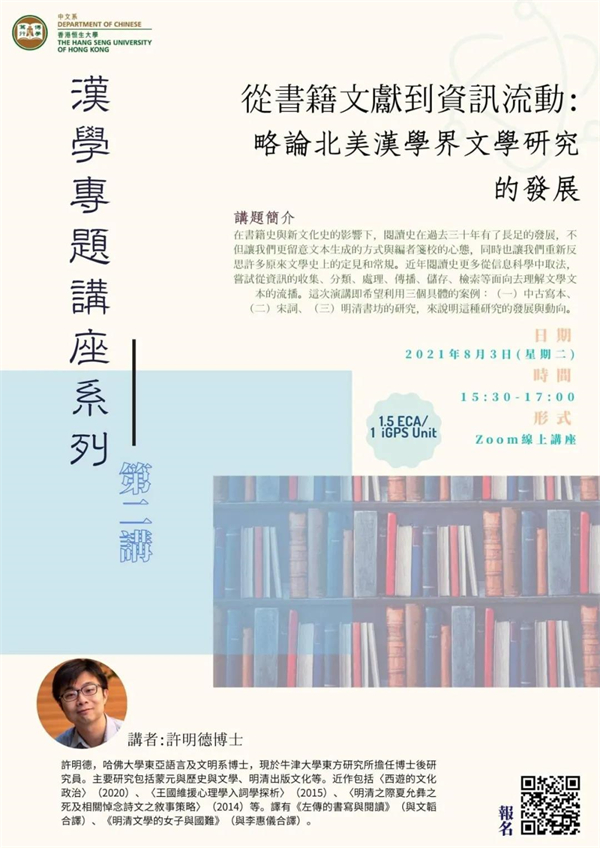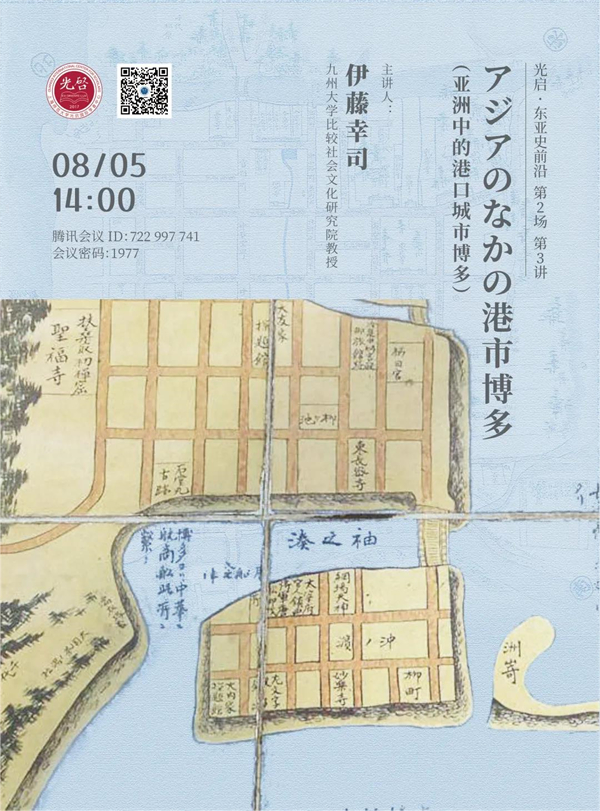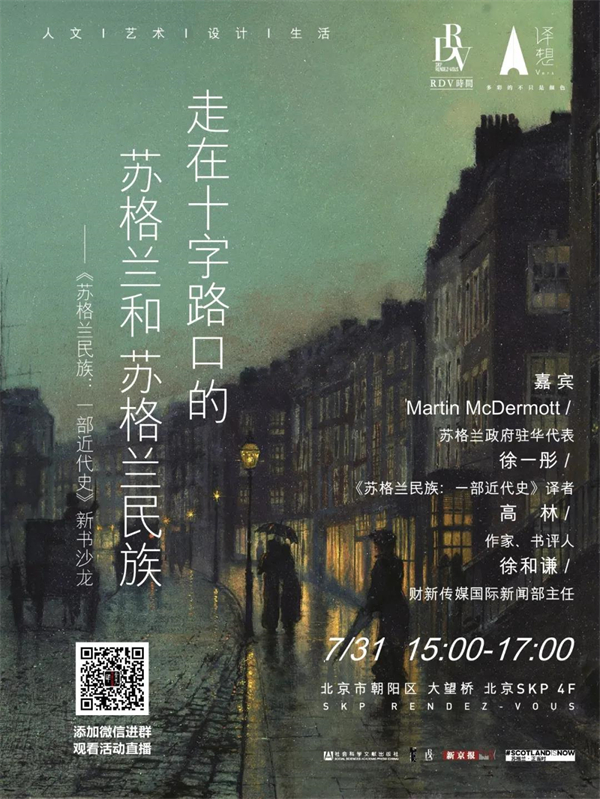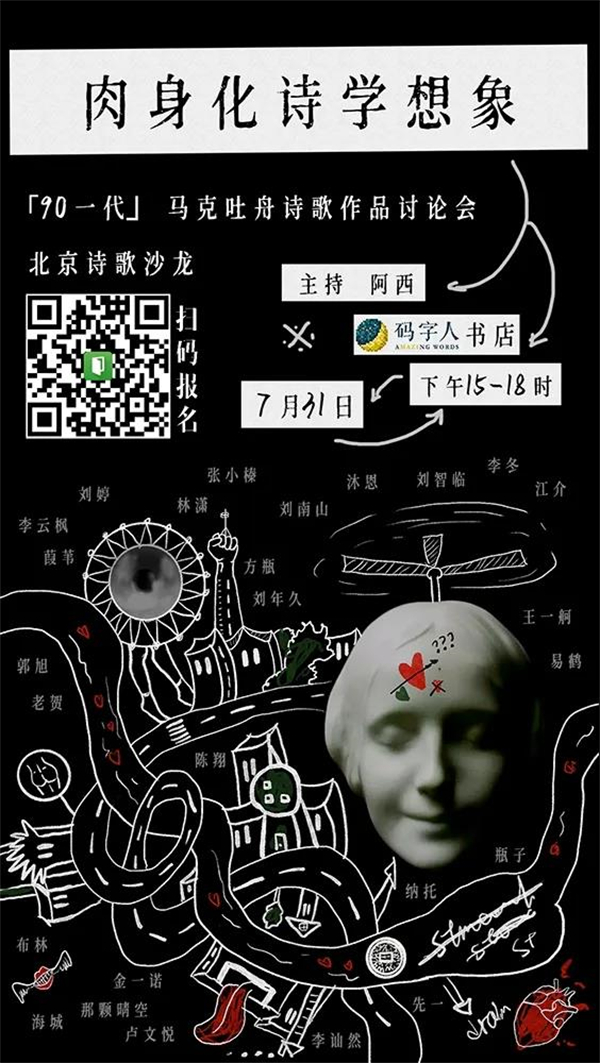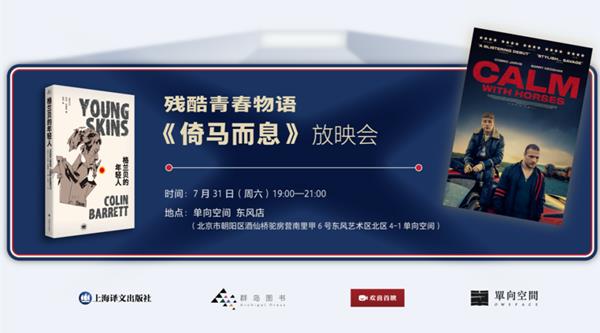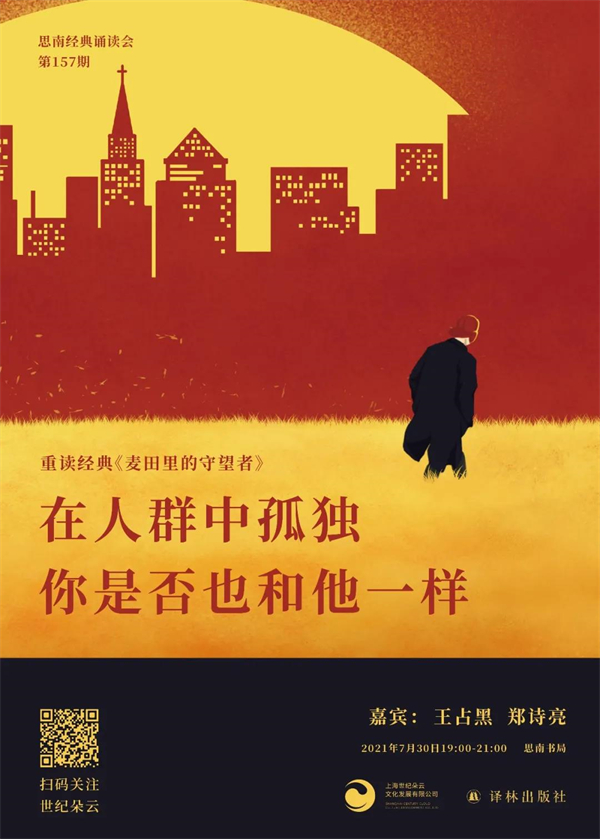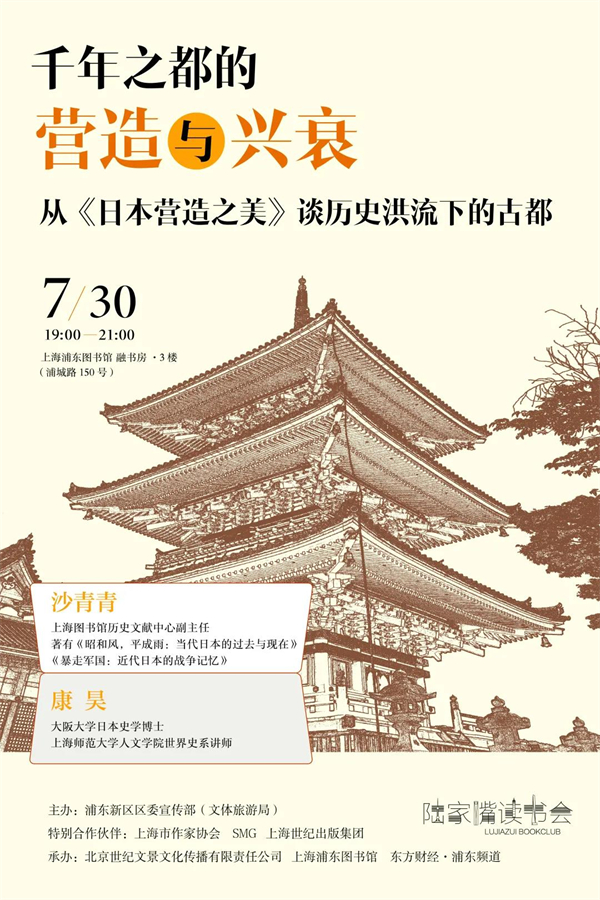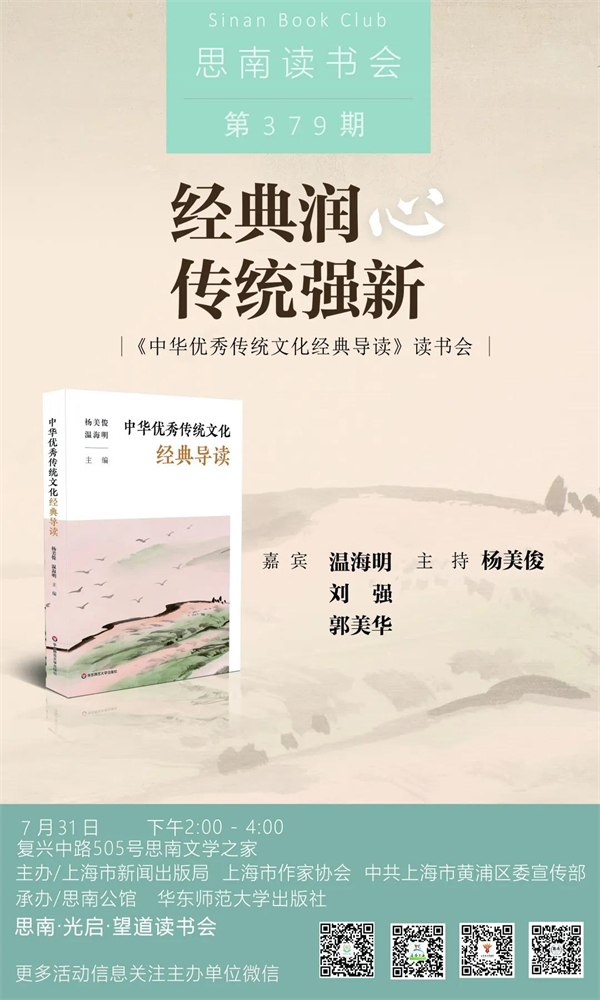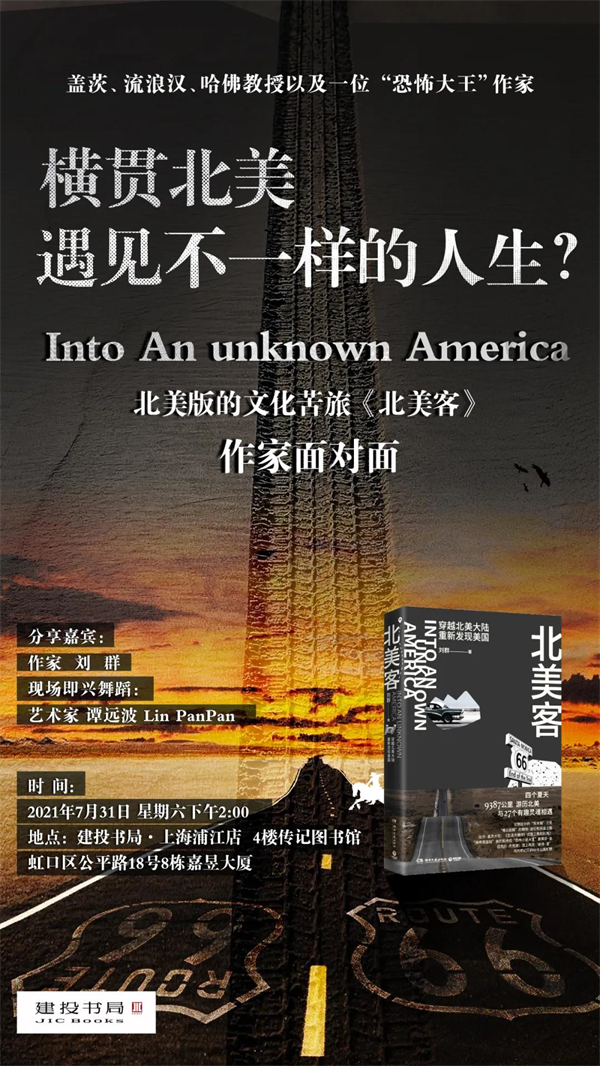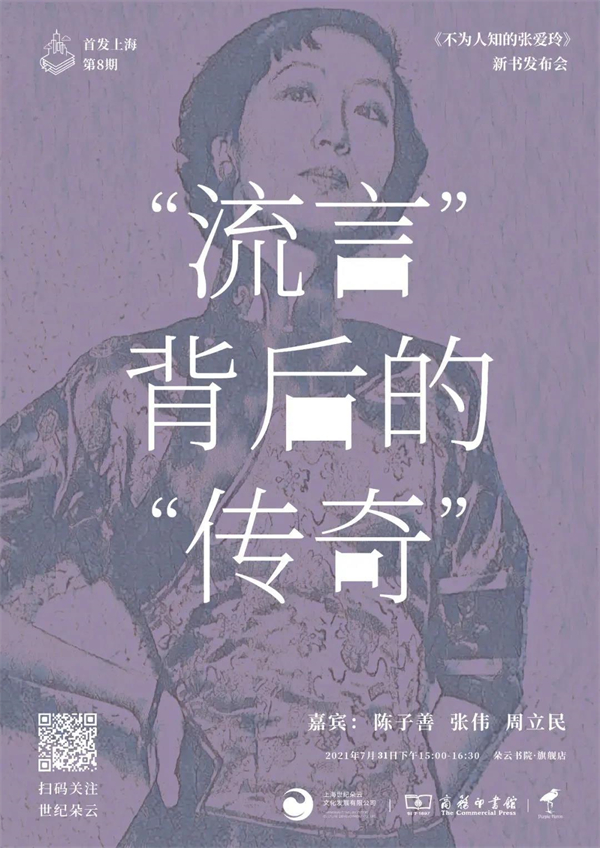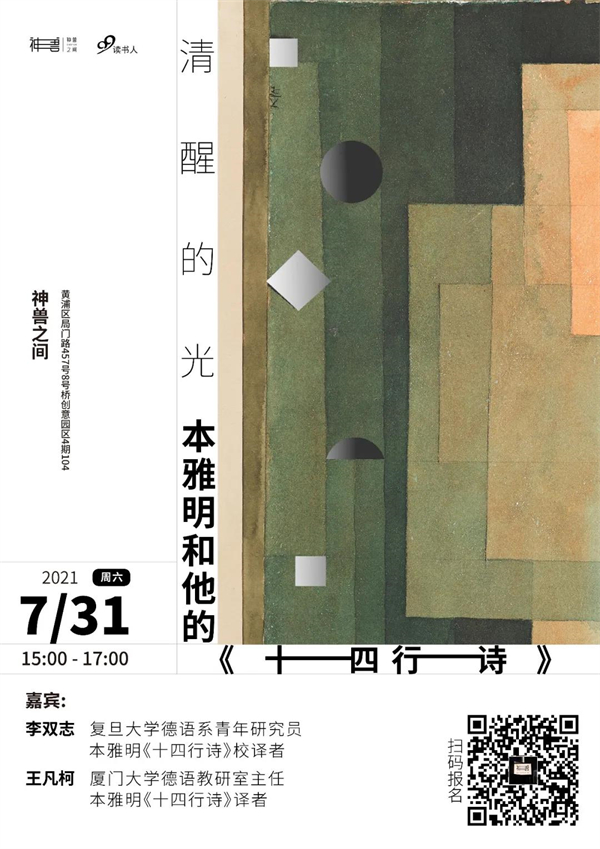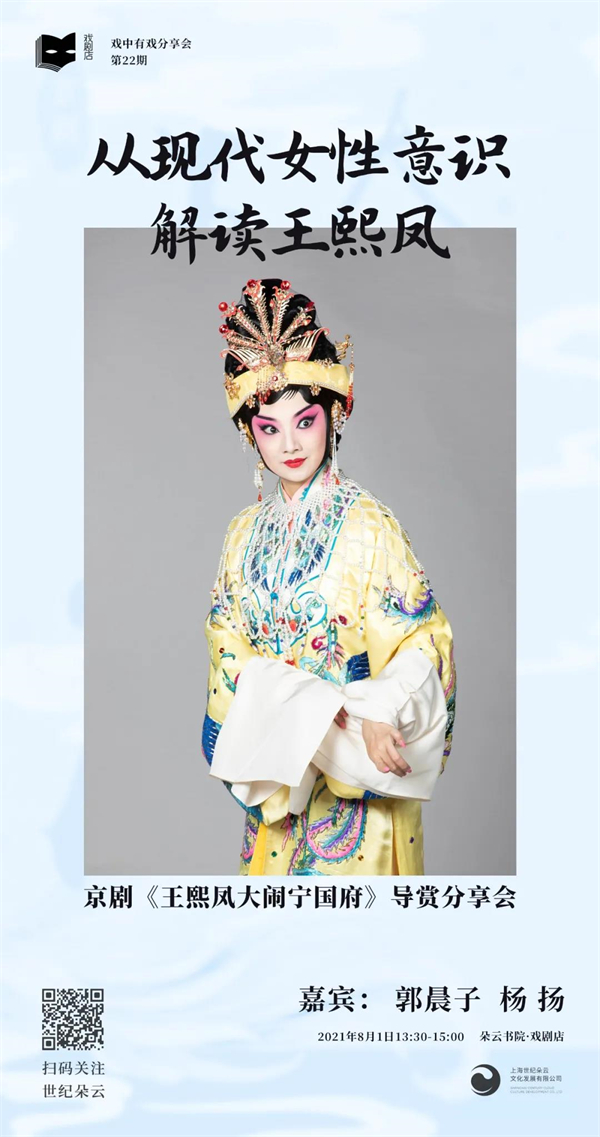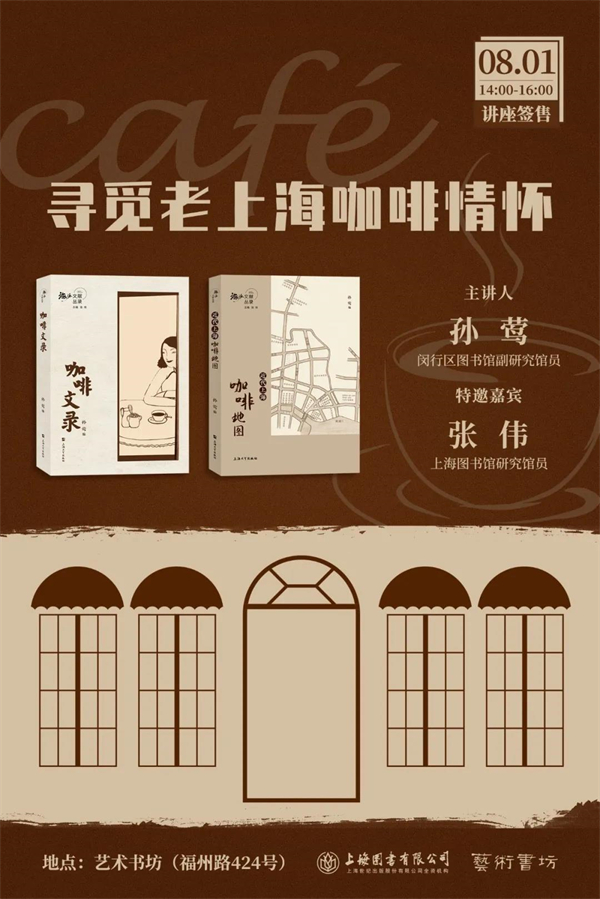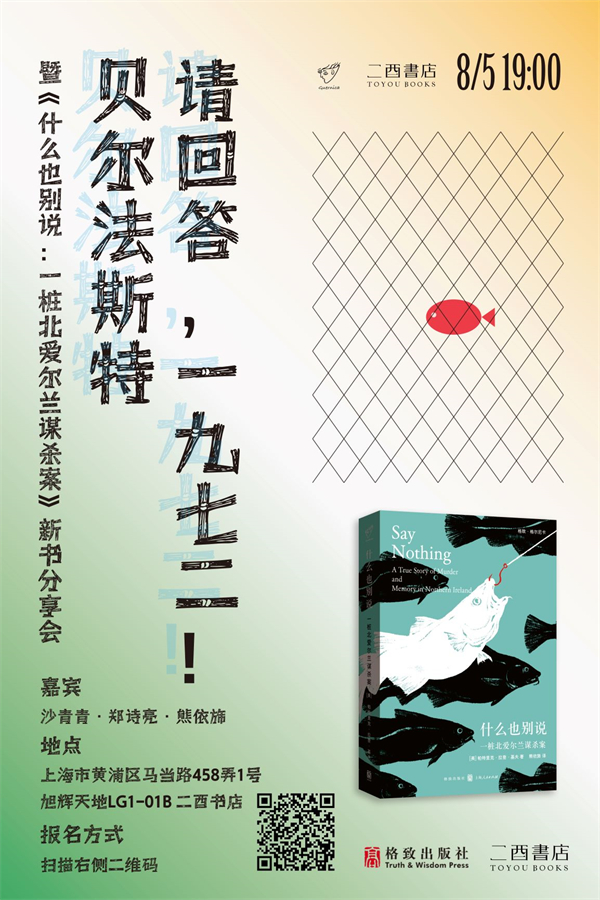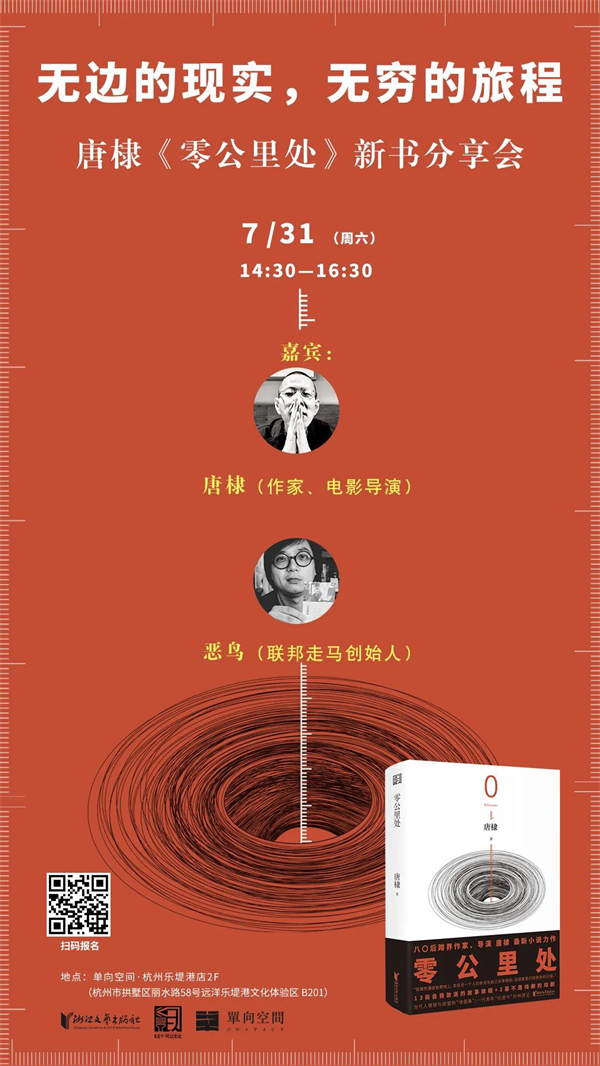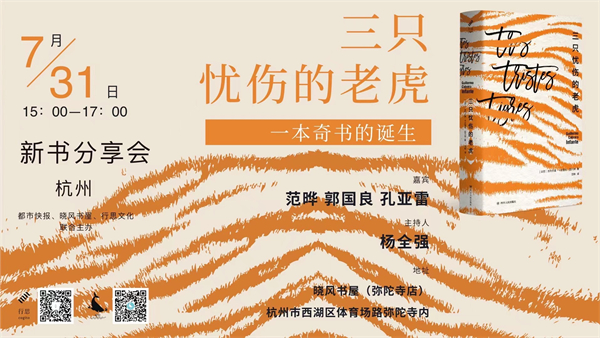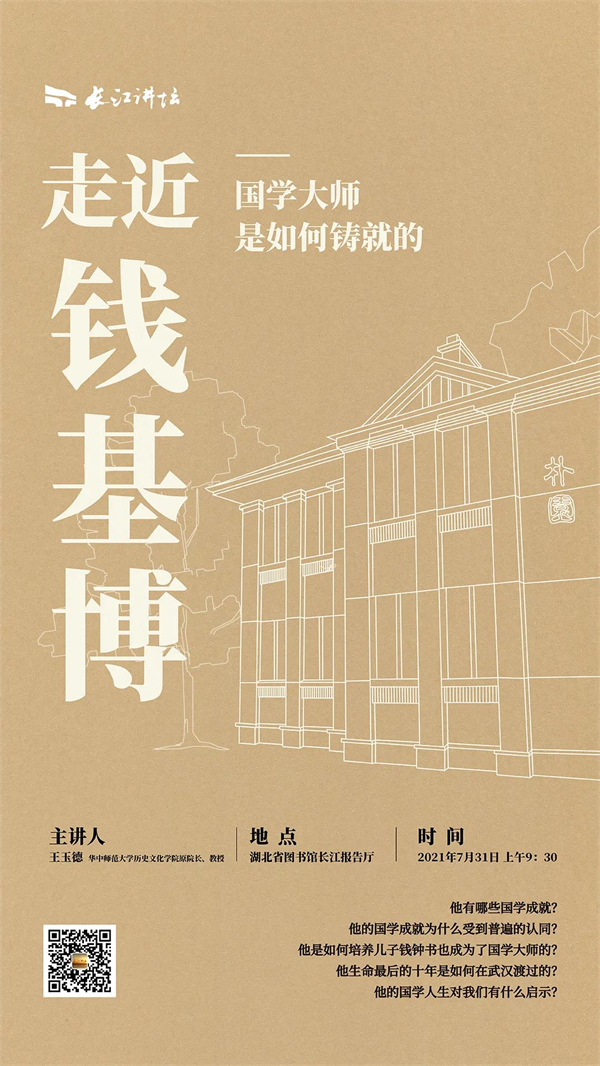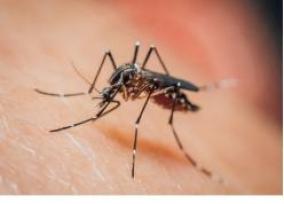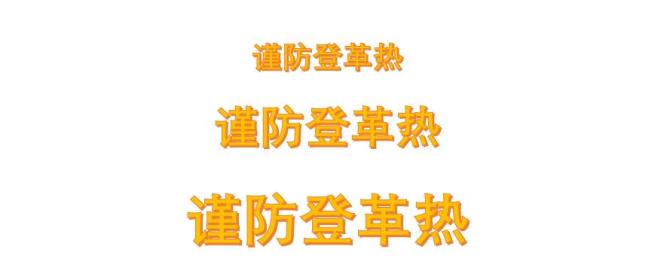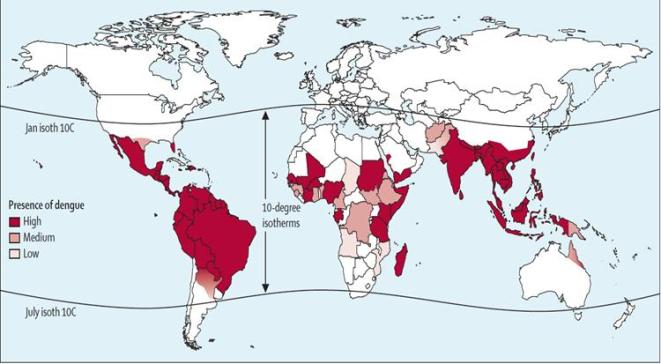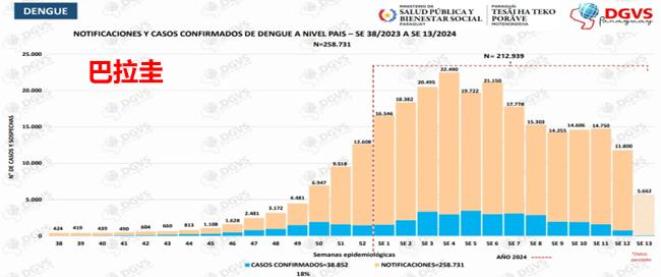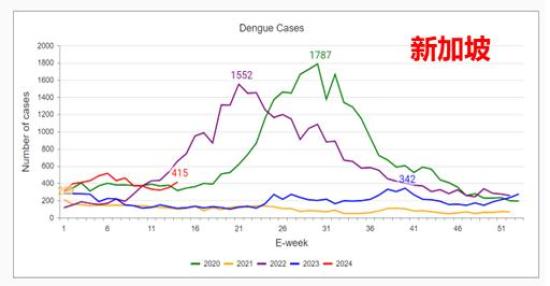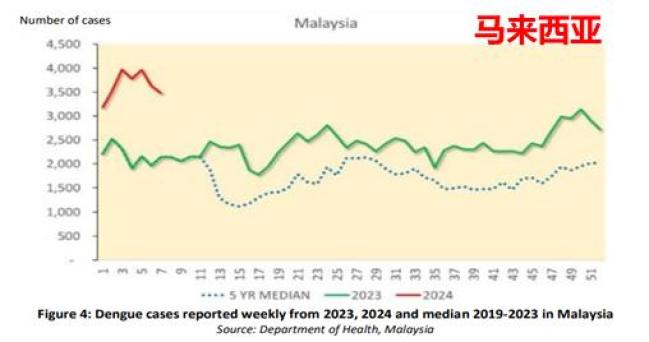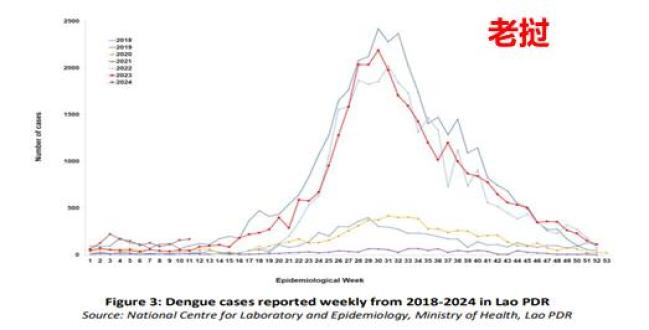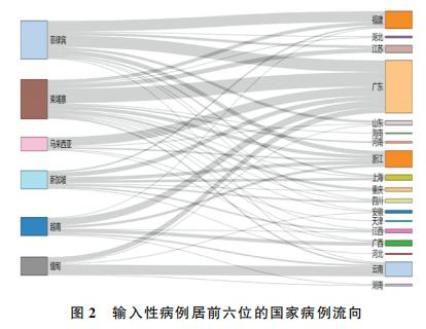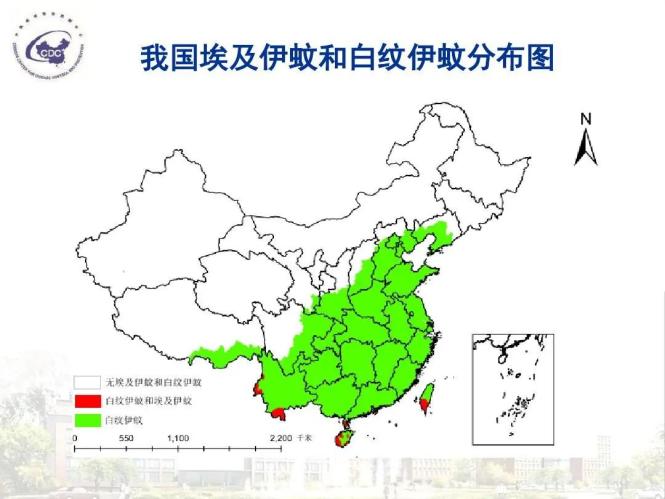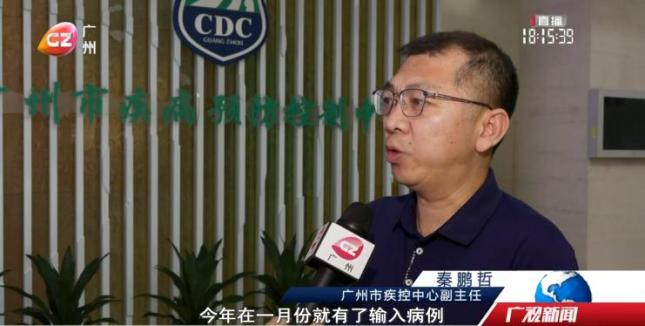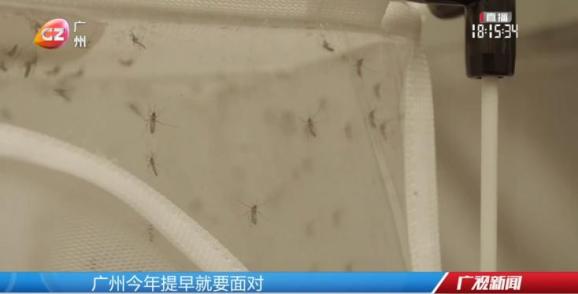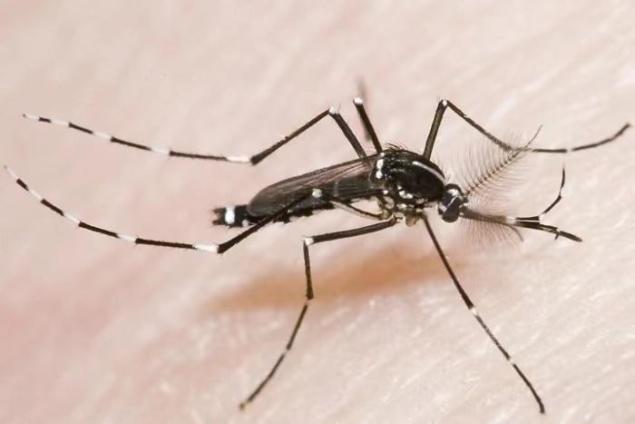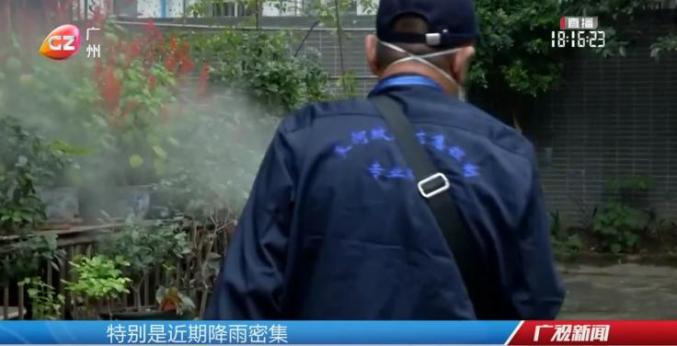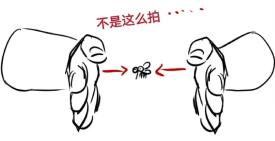Notice of the General Office of the State Council on printing and distributing the guidelines for the development of government websites
Guo Ban Fa [2017] No.47
People’s governments of all provinces, autonomous regions and municipalities directly under the Central Government, ministries and commissions and institutions directly under the State Council:
The "Guidelines for the Development of Government Websites" have been approved by the State Council and are hereby printed and distributed to you, please implement them carefully.
the General Office of the State Council
May 15, 2017
(This piece is publicly released)
Guidelines for the development of government websites
In order to further strengthen the management of government websites, lead the innovative development of government websites at all levels, further promote the construction of Internet government information data and convenience service platform, and enhance the government’s online service capability, these guidelines are formulated in accordance with the requirements of the CPC Central Committee and the State Council on comprehensively promoting government affairs openness and "Internet+government services" and in combination with the actual work of government websites in various regions and departments.
The term "government website" as mentioned in these Guidelines refers to the websites run by people’s governments at all levels and their departments, agencies and institutions undertaking administrative functions on the Internet, which have the functions of information release, interpretation and response, service and interactive communication.
All regions and departments can refer to these guidelines to formulate measures for the management of government websites in their own regions and departments, standardize website domain names, strictly start the process, strengthen supervision and assessment, promote resource intensive, and realize the orderly and healthy development of government websites.
I. General requirements
(1) Guiding ideology.
Fully implement the spirit of the 18th National Congress of the Communist Party of China and the Third, Fourth, Fifth and Sixth Plenary Sessions of the 18th Central Committee, thoroughly implement the spirit of the series of important speeches by the Supreme Leader General Secretary and the new ideas, new ideas and new strategies for governing the country, conscientiously implement the decision-making arrangements of the CPC Central Committee and the State Council, coordinate and promote the overall layout of the "five in one" and the "four comprehensive" strategic layout, and firmly establish and implement the development concept of innovation, coordination, green, openness and sharing. In accordance with the requirements of building a government ruled by law, an innovative government, a clean government and a service-oriented government, we should adapt to people’s expectations and needs, break through information barriers, promote the sharing of government information resources, continuously improve the government’s online performance ability and service level, and promote the modernization of the national governance system and governance capacity through informationization, so that hundreds of millions of people can have more sense of sharing the fruits of Internet development.
(2) Development goals.
Adapt to the development and changes of the Internet, promote intensive sharing, and continue to explore and innovate. By 2020, the government website will be built into a more comprehensive platform for open government affairs, a more authoritative platform for policy release, interpretation and public opinion guidance, a more timely platform for responding to concerns and facilitating people’s services, with the Chinese government website as the leader and the websites of departments and local governments as the support, and an online government with overall linkage and high efficiency will be built.
(3) Basic principles.
1. Classification.According to the level of economic and social development and public demand, scientifically define website categories, classify and guide, and standardize construction. Make overall consideration of the functional orientation of various government websites at all levels, highlight the characteristics, and clarify the construction mode and development direction.
2. Problem-oriented.In view of the problems such as untimely update, inaccurate information, non-sharing of resources, non-response of interaction and impractical service, we will improve the system and mechanism, deepen the division of labor and cooperation, and strengthen the content construction of government websites.
3. benefit enterprises and facilitate the people.Focusing on the needs of the masses of enterprises, we will promote the openness of government affairs, optimize government services, enhance user experience, and provide available, practical and easy-to-use Internet government information data services and convenience services.
4. Open innovation.Adhere to open integration and innovation-driven, make full use of big data, cloud computing, artificial intelligence and other technologies, explore the construction of flexible and extensible website architecture, innovate service models, and create smart government websites.
5. Intensive economy.Strengthen overall planning and top-level design, optimize the allocation of technology, capital, personnel and other elements, avoid redundant construction, and build a coordinated, standardized and efficient government website cluster based on a centralized and shared resource pool and a safe and controllable cloud platform.
Second, the division of responsibilities
(1) Management responsibilities.
The State Council General Office is the competent unit of the national government website, responsible for promoting, guiding and supervising the construction and development of the national government website. The general offices of the people’s governments of all provinces (autonomous regions and municipalities) and the general offices (rooms) of various departments in the State Council are the competent units of the government websites of their respective regions and departments, and the general office (room) of the the State Council Department, which implements the vertical management of the whole system, is the competent unit of the website of this system. The competent unit is responsible for the overall planning, supervision and assessment of the government website, and do a good job in the management of integration, safety management, assessment and supervision and accountability. The general offices (rooms) of the people’s governments at the prefecture and county levels shall undertake the management duties of the websites of the local district governments.
The Central Network Information Office coordinates the safety management of government websites nationwide. The editorial office of the Central Committee, the Ministry of Industry and Information Technology and the Ministry of Public Security are the cooperative supervision units of the national government websites, and jointly do a good job in website logo management, domain name management and ICP filing, network security level protection, and cracking down on cyber crimes.
(2) the duties of the station.
1. The organizer of the government website is generally the government office (room) or the department office (room), which is responsible for the construction planning, organizational guarantee, healthy development and safety management of the website. The organizer may designate an internal organization in the general office (room) or entrust other specialized agencies as the organizer, specifically implement the relevant requirements of the organizer, and undertake the daily operation guarantee work of website technology platform construction and maintenance, security protection, and exhibition design, content release, audit and inspection, dissemination and promotion. For the division of responsibilities of the intensive website platform, see the relevant part of this guideline.
2. The content materials of government websites are mainly provided by the business departments that produce public government information data and have the function of foreign government services. Relevant business departments should actively use government websites to publish information and provide services to ensure that the information provided is authoritative, accurate and timely; Establish a confidentiality review mechanism, prohibit confidential information from accessing the Internet, and not disclose personal privacy and business secrets; Take the initiative to do a good job of docking relevant business systems with government websites. Government websites should integrate and display the accessed business systems in a unified way. According to the needs of business departments, we should flexibly set up special columns, jointly plan and carry out special activities of online and offline linkage, and actively serve the government.
3. The content editing of government websites should be handled by specialized personnel. Specifically responsible for the timely release and update of website content, unified management of data resources, integrated processing of information services, response to interactive appeals, optimization and innovation of presentation forms, etc. Do a good job in planning, collecting, compiling and publishing information content, strengthen on-duty review, find and correct wrong information in time, and ensure the accuracy of website content and practical service.
4. The technical operation and maintenance of government websites should be handled by specialized personnel. Be responsible for the construction and technical support of the website platform, and do a good job in software and hardware system maintenance, function upgrade and application development. In accordance with the requirements of laws, regulations, policies and standards such as the Cyber Security Law, we will carry out testing, evaluation and safety construction, and conduct regular safety inspections on websites to eliminate hidden dangers in time. Constantly improve security protection measures such as anti-attack, anti-tampering and anti-virus, strengthen daily inspection and monitoring, and handle problems or emergencies in time to ensure the safe, stable and efficient operation of the website platform.
Third, the opening and integration
(1) Website opening.
Government websites are divided into government portal websites and departmental websites. People’s governments at or above the county level and their departments shall, in principle, set up at most one website for one unit.
1. classification.
Government portal website. People’s governments at or above the county level and the State Council departments should open government portals. In principle, towns and streets do not open government portals, and open government affairs through government portals at higher levels to provide government services. The existing township and street websites should integrate the content into the portal website of the higher government as soon as possible. Towns and streets with special needs can keep or open websites after applying for approval with reference to the opening process of government portal websites.
Department website. Provincial, prefectural and municipal government departments, as well as local institutions at or above the county level that implement system-wide vertical management departments, can open their own websites as needed.
In principle, county-level government departments do not open government websites, and open government affairs through county-level government portals to provide government services. The existing websites of county-level government departments should integrate the content into the portal website of county-level government as soon as possible. County-level government departments with special needs can keep or open websites after applying for approval according to the departmental website opening process.
When all regions and departments carry out major activities or special work, in principle, special websites are not set up separately, and special columns can be set up on government portals or departmental websites to do related work. The special website that has been opened only involves the responsibilities of a single government department, and the content should be integrated into the relevant government website as soon as possible; Involving the responsibilities of multiple government departments, it is necessary to integrate the content into the government portal website or the website of the lead department.
2. Opening process.
(1) the provincial government and the the State Council department plan to open a portal website, and after the approval of the main responsible comrades in the local area and the department, the general office (room) of the local area and the department shall handle relevant matters according to the process and report to the General Office of the State Council for the record. The people’s governments at the prefecture level and county level intend to open government portals, and after the consent of the principal responsible comrades of the government at the corresponding level, the general office of the government at the corresponding level (room) shall apply to the general office of the government at a higher level, and review it step by step, and report it to the general office of the people’s government of the province (autonomous region, city) for approval.
Provincial, prefecture-level people’s government departments plan to set up departmental websites, and apply to the general office (room) of the people’s government at the corresponding level with the consent of the principal responsible comrades of the department, and review it step by step, and report it to the general office of the people’s government of the province (autonomous region, city) for approval. The grass-roots departments that implement the vertical management of the whole system plan to set up departmental websites. After the consent of the principal responsible comrades of this department, they should apply to the general office (room) of the superior department, and review it step by step, and report it to the general office (room) of the relevant department of the State Council for approval.
(2) The organizer of the government website submits an application for adding the website logo of the party and government organs to the preparation department, and registers the domain name of the government website according to the process; Apply to the local telecommunications authorities for ICP filing; According to the relevant requirements of network system security management, file with the public security organ.
(3) The organizer of the government website submits the basic information of the website, and the website can be put into operation only after it is reviewed step by step and reported to the General Office of the State Council for the identification code of the government website. The newly opened government portal website should be announced in the higher government portal website; The website of the newly opened department shall be announced in the government portal website at the corresponding level. Government websites that have not passed the safety inspection shall not be put into operation.
3. Name specification.
Government portals and departmental websites should be named after the local and departmental organizations. If the existing name does not meet the requirements, it should be adjusted as soon as possible, or the standard name should be added in the display area of the existing name. The government website should prominently display the full name of the website in the head logo area.
4. Domain name specification.
Government websites should use English domain names with the suffix. gov.cn and Chinese domain names that meet the requirements, and English domain names with other suffixes are not allowed. The portal website of the Central People’s Government uses the "www.gov.cn" domain name, and other government portal websites use the domain name of "www. □□□□ gov.cn" structure, where □□□□ is the pinyin or English-corresponding character string of the organization name of the local region and the department. For example, the domain name of the portal website of Beijing Municipal People’s Government is www.beijing.gov.cn, and the domain name of the portal website of Ministry of Commerce is www.mofcom.gov.cn.
The department website should use the lower domain name of the portal website of the government at the same level or the higher department, and its structure should be "○○○.□□□.gov.cn", where ○○○○○○○○○○○○○○○○○ For example, the domain name of Baoding Water Resources Bureau website is slj.bd.gov.cn.
Government websites should not register multiple domain names. If the existing domain names do not meet the requirements, they should be cancelled gradually. If there are multiple domain names that meet the requirements, the main domain name should be specified. In principle, the websites of website columns and content pages are in the form of "www. □□□□ .gov.cn/.https://www.gov.cn/zhengce/content/2017-06/. …" and "○○ □□□□ .gov.cn/.https://www.gov.cn/zhengce/content/2017-06/. …". The domain names of newly opened government websites, columns and content pages should be set according to the requirements of these guidelines, and the original domain names that do not meet the requirements of these guidelines should be gradually adjusted.
5. Logo and slogan.
Logo is an important visual element to build the brand image of government websites. All regions and departments can design website logos according to regional characteristics or departmental characteristics, and the logos should be distinctive, easy to identify, beautiful in shape and easy to remember and popularize.
Government websites generally do not set up slogans. If necessary, the exhibition can be designed according to the development concept and objectives of the region and the department.
(2) Website integration.
Government portals are generally not allowed to shut down. Website revision and upgrading should be carried out under the condition of ensuring normal operation.
1. Website migration.
If the government website is unable to maintain, the organizer cancels the merger or needs to be permanently offline according to the relevant intensive requirements, the original content should be integrated and migrated. The integration and migration shall be applied by the organizer, reviewed step by step, and approved by the general office of the people’s government of the province (autonomous region or municipality) or the general office of the department of the State Council before it can be started. The website to be migrated should hang the announcement information of migration in a prominent position on the homepage of the website, then cancel the registration mark, certificate information (such as ICP filing number, website mark of party and government organs, public security organ filing mark, etc.) and domain name to the management department, and report the website change status to the General Office of the State Council. After the website is migrated, an announcement should be made on the website of the higher-level government or the portal website of the government at the same level to explain the whereabouts of the original content. In principle, the relevant announcement information shall be kept for at least 30 days.
2. Temporary offline.
If the government website needs to be temporarily offline due to rectification and other reasons, the organizer shall apply and review it step by step. Only after the approval of the general office of the people’s government of the province (autonomous region or municipality) or the general office of the the State Council Department (room) can it be temporarily offline, and an announcement shall be made on this website and the government portal at the corresponding level. Temporary offline shall not exceed once a year, and offline time shall not exceed 30 days.
In case of long-term power failure or network disconnection due to force majeure, or being ordered to shut down urgently due to failure to implement relevant safety requirements, the general office of the people’s government of the relevant province (autonomous region, municipality) or the general office of the the State Council Department (room) shall promptly report to the General Office of the State Council in written form, which shall not be included in the offline times of the year.
Not in accordance with the relevant procedures and requirements, self offline government website or not according to the requirements of rectification, the relevant provinces (autonomous regions and municipalities) people’s government office or the State Council department office (room) to the website organizer responsible person serious accountability.
3. Web archiving.
Web page archiving is the process of sorting, storing and utilizing the historical web pages of government websites. In case of integration, migration, revision, etc., the government website should archive the valuable original pages. The archived pages should be accessible normally, and clearly marked with "Archived" and archiving time in a prominent position.
(3) filing of changes.
Due to institutional adjustment, website revision and other reasons, the organizer, person in charge, contact information, website domain name, column main structure or access address of the government website are changed, and the relevant information should be filed with the higher authorities in time and updated. If the domain name of the website changes, an announcement should be made on the original website.
Fourth, the website function
The functions of government websites mainly include information release, interpretation, response and interactive communication, and government portals and departmental websites with external service functions should also provide service functions. The Chinese government website should play the role of the first platform for government affairs openness and the general portal for government services, and build an open government website system architecture. The websites of provincial governments and the State Council departments should take the initiative to connect with the Chinese government website.
(1) Information release.
All regions and departments should establish and improve the information release mechanism of government websites, and timely and accurately release important government meetings, important activities and major decision-making information. After the the State Council document was publicly released on the Chinese government website, all regions and departments should reprint it on the websites of their own regions and departments in a timely manner, increase publicity and do a good job in the implementation of the the State Council document.
Government websites should scientifically classify and update the published information and data in time to ensure accuracy and authority and facilitate public use. The columns where information data cannot be continuously updated or maintained should be optimized and adjusted. When the published static information changes or is adjusted, it should be updated and replaced in time. When using maps on government websites, it is necessary to adopt standard maps issued by surveying and mapping departments or maps with approval numbers obtained according to law.
1. General information. Publish introductory information on economy, society, history, geography, humanities and administrative divisions.
2. Institutional functions. Publish information such as organization setting, main responsibilities and contact information. When publishing functional information of multiple institutions on the same website, it is necessary to centralize and standardize the publishing and unify the presentation form.
3. Information of the person in charge. Release the information of the person in charge of the region, the department and the institution, which may include the name, photo, resume, supervisor or in charge of the work, and important speeches.
4. Documentation. The release of local and departmental laws and regulations, government documents that should be voluntarily disclosed and relevant laws and regulations should provide accurate classification and search functions. If the relevant documents are modified, abolished or invalidated, they should be made public in time and clearly marked on the published original documents.
5. Government affairs dynamics. Release local and departmental government affairs news, notices and announcements, work trends and other information that needs to be widely known by the public, and reprint important information released by government websites at higher levels and government portals at the same level. When publishing or reprinting information, the source should be indicated to ensure the accuracy of the content. For important information, relevant pictures and videos should be distributed conditionally.
6 information disclosure guide, catalogue and annual report. Publish the guide and catalogue of government information disclosure, and update them in time. The information disclosure catalogue should be associated with the website file database and relevant column contents, and specific information can be retrieved through the catalogue to facilitate public search. Release the annual report on government information disclosure as required.
7. Data release. Publish statistics of the local industry with high social concern such as population, natural resources, economy, agriculture, industry, service industry, finance and people’s livelihood security. Strengthen the docking with relevant systems of business departments, dynamically update relevant data through data interfaces, and do a good job in data docking and front-end integration with websites such as government portals and Chinese government websites at the same level. It is necessary to scientifically and reasonably classify the data according to the dimensions such as theme, region and department, and display and interpret them through visualization methods such as charts, diagrams and maps. Provide convenient data query function, search by data item and time period, dynamically generate data chart, and provide download function.
8. Open data. On the premise of security and privacy protection in accordance with the law, the government data set is opened to the public in a machine-readable data format through the government website, and it is continuously updated to provide a data interface to facilitate the public to develop new applications. Confidentiality review and desensitization should be carried out before data is opened, and expired data should be cleaned up and updated in time or marked with expired labels. The government website should disclose the data directory that has been opened on the website, and indicate the number of views, downloads and interface calls of each data set. The national government data unified open platform and the Chinese government network should do a good job of data docking and front-end integration to form a unified data open entrance.
(2) Interpreting the response.
1. When the government website publishes important policy documents of the region and the department, it shall publish the interpretation materials provided by the document issuing department, the lead department or the drafting department. Through the release of various forms of interpretation, comments and interviews, the background basis, objectives and tasks, main contents and problems solved of the policy are introduced in detail. When the the State Council document is released to the public, it should be released simultaneously on the Chinese government website with the news release of the document and supporting policy interpretation materials.
2. The government website should, according to the policy documents and interpretation materials to be released, work with business departments to produce interpretation products that are easy for the public to understand and spread on the Internet. From the actual needs of public production and life, the policy documents and interpretation materials should be sorted, classified, refined, streamlined, re-organized, and displayed in digital, graphic, audio, video, animation and other forms. Website interpretation products must be consistent with the contents of the document, and be released in time after the document is online.
3. The government website should do a good job in the correlation between policy documents and interpretation materials, provide an entrance to the interpretation materials page on the policy documents page, and associate the relevant contents of the policy documents on the interpretation materials page. Reprint the media commentary articles that interpret the spirit of the policy document in time, form a joint force of communication, and enhance the communication and influence of the policy.
4. For major emergencies involving local areas and departments, under the guidance of the propaganda department, timely release the response information provided by relevant response subjects according to procedures, publish objective facts, and release dynamic information according to the development of events and work progress, indicating the government’s attitude. For hot issues of public concern, relevant business departments should be invited to make authoritative and positive responses, clarify policies, and solve doubts and doubts. For online rumors involving the region and the department, it is necessary to timely release the rumors of relevant departments. Response information should be actively pushed to various traditional media and new media platforms to expand the scope of communication and enhance the interactive effect.
(3) handling services.
1 provinces (autonomous regions and municipalities) people’s governments and relevant departments of the State Council should rely on government portals, integrate local and departmental government service resources and data, and accelerate the construction of an authoritative and convenient integrated Internet government service platform. The Chinese government network is the general portal of government services in China, and the online government service platforms of all regions and departments should take the initiative to do a good job of docking.
The government website should set up a unified service entrance, publish a catalogue of government services in the region and the department, and provide online services in a centralized manner. It is necessary to compile a list of online service resources of the website, and scientifically classify, uniformly name and reasonably display the service items according to the dimensions such as theme and object. The degree to which each service item can be handled online should be indicated, and those that can be handled online throughout the whole process should be concentrated and highlighted. Non-government services should be strictly examined and carefully provided to ensure safety.
2. The service function should be organically related to the information resources in the document database, interactive communication platform and question-and-answer knowledge base, and provide relevant laws and regulations, policy documents, frequently asked questions, consultation complaints and supervision reports on the list page or service guide page to realize integrated services. Information service resources, such as document database and question-and-answer knowledge base, built on the websites of provincial governments and the State Council departments should actively connect with the Chinese government network to form an interconnected government information resource database.
3. Integrate the front-end functions of the business department’s service system, and provide online reservation, online declaration, online consultation, online inquiry, electronic monitoring, public evaluation and other functions by using the electronic license database and unified identity authentication to realize unified acceptance, unified record and unified feedback of the website.
4. Refine the standard work guide, and list the basis conditions, process time limit, charging standards, precautions, handling institutions, contact information, etc.; Clarify the requirements of the name, basis, format, number of copies, signature and seal of the materials to be submitted, and provide standard forms, filling instructions and demonstration texts to ensure the accuracy of the content and consistency with the offline.
5. Record the whole online service process of the enterprise masses, and summarize and analyze the key data such as consulting, booking, consulting, application, acceptance and feedback, so as to provide reference for business departments to simplify and optimize service processes and facilitate the work of the enterprise masses.
(4) Interactive communication.
1. The government portal website should build a unified interactive communication platform, and realize the functions of leaving comments, online interviews, collecting surveys, consulting complaints and instant messaging according to the needs of the work, so as to provide platform support for listening to public opinions, understanding people’s wishes, gathering people’s wisdom and responding to people’s voices. The interactive communication column of the department website should try to use the unified interactive communication platform of the government portal website. The interactive communication column should indicate the purpose, purpose and way of use.
2. Information publishing, interpretation and response, and service columns should provide comments and other functions through a unified interactive communication platform to achieve data aggregation and unified processing.
3. The government website should set up interactive communication columns, strengthen auditing and organizational guarantee, ensure the orderly participation of netizens, improve the interaction frequency of business departments and enhance the interaction effect. Establish mechanisms such as reviewing, processing and feedback of netizens’ opinions and suggestions, so as to ensure that everything is implemented and everything is echoed, so as to listen to public opinion and collect people’s wisdom. Local and departmental websites should seriously study and handle the opinions and suggestions of netizens transferred from Chinese government websites and give timely feedback.
4. The collected opinions and suggestions should be carefully judged, the drafted public opinion information should objectively and truly reflect the voices and concerns of the masses, and the policy suggestions with reference value should be transferred to the business department for research and handling according to procedures, and the reply opinions should be put forward. If the reply provided by the relevant units is perfunctory, evasive and irrelevant, it should be returned and actively communicated, and the relevant units should be urged to reply again.
5. Do a good job in the publicity of opinions and suggestions, and list the acceptance date, reply date, reply department, reply content and relevant statistical data. To carry out special opinions and suggestions collection activities, it is necessary to publish the adoption on the website. If you accept the opinions and suggestions of netizens in the form of e-mail, you should check the e-mail letters daily, handle them in time and disclose the handling of letters.
6. Regularly sort out the contents of netizens’ consultation and reply, classify, summarize and structure according to the theme and attention, compile and form a knowledge base, and implement dynamic update. When netizens make similar inquiries, push the reference reply caliber.
V. Intensive sharing
Intensive is an effective way to solve the problems of "information island" and "data chimney" of government websites. Through unified standard system, unified technology platform, unified security protection, unified operation and maintenance supervision, centralized management of information and data, centralized provision of content services, to achieve optimal integration of government website resources, platform integration and security, mutual recognition and sharing of data, standardized management, and convenient and efficient services.
(1) Promote intensification according to responsibilities.
1 provinces (autonomous regions and municipalities) to build the local government website intensive platform. The districts (counties) under the jurisdiction of sub-provincial cities, conditional prefecture-level cities or municipalities directly under the Central Government may, with the approval of the general office of the people’s governments of provinces (autonomous regions and municipalities), build an intensive platform for the websites of local district governments, and realize interconnection and collaborative linkage with provincial platforms.
The State Council departments should build an intensive platform for their own government websites, and internal institutions should not build a website technology platform alone. In principle, the the State Council department that implements the vertical management of the whole system should build an intensive platform for the government website of this system, and can build a two-level platform for the the State Council department and the provincial vertical management department according to the actual situation.
The general offices of the people’s governments of all provinces (autonomous regions and municipalities) and the general offices of the State Council departments (rooms) are responsible for the overall promotion, organization and coordination, and assessment management of the intensive work of government websites in their respective regions and departments, and should designate specialized agencies to study the construction requirements, technical routes, system architecture, deployment strategies, operation and maintenance mechanisms, and security protection systems of the intensive platform.
2. The websites of provincial government departments should be deployed on provincial platforms. The portals of prefecture-level and county-level governments, the websites of prefecture-level government departments and the websites of dual management departments should be deployed on provincial platforms or prefecture-level platforms approved for construction.
The website of the vertical management department of the whole system shall be deployed on the corresponding platform according to the requirements of relevant departments in the State Council. The website of the internal organs of the the State Council department that has been opened should be intensified to the intensive platform of the the State Council department.
Other approved government websites should be deployed on the corresponding provincial and ministerial platforms or prefecture-level platforms approved for construction.
3. The management department of the intensive platform and the host and undertaker of the government website on the platform should determine their respective responsibilities through consultation according to the actual situation. In principle, the organizers and contractors of government websites are responsible for the column planning and content guarantee of this website, and arrange relevant funds by themselves. The management department of the intensive platform should do a good job in technical support and security. If the built intensive platform can’t meet the personalized needs of the relevant government websites, the management department of the intensive platform should communicate and negotiate with the organizers and contractors, actively cooperate and respond in time.
4. The websites of grass-roots departments deployed on the intensive platform of the State Council departments should ensure the information content according to the requirements of the competent units corresponding to the websites of grass-roots departments. The management department of the intensive platform should actively respond to the needs of website opening and integration and column customization of grass-roots departments.
(2) Platform function and safety protection.
1. The intensive platform should provide the following functions to the government website on the platform: site management, column management, resource management and authority management; Content release, leadership mailbox, solicitation survey and online interview; In-station search, evaluation and supervision; User registration and unified identity authentication; Personalized customization, content push, operation and maintenance monitoring, statistical analysis, security protection, etc. At the same time, it should have the expansibility of docking and integration with systems and databases such as government affairs openness, government affairs service and electronic license database. Technologies such as CDN (Content Distribution Network) can be used to improve the processing efficiency and response speed of access requests.
2. The intensive platform should make full use of cloud computing, big data and other related technologies to meet the construction needs of government websites in the region, the department and the system, and can be built by relying on a third-party cloud platform that meets the security requirements. It is necessary to strengthen the daily management, assessment and supervision of the intensive platform to ensure the safe and stable operation.
(3) Sharing common information resources.
1. Build a platform-wide unified information resource library with scientific classification, centralized standardization and sharing, and manage the information resources from government websites on the platform in a unified way according to the principle of "put them in the library first, then use them" to realize unified classification, unified metadata, unified data format, unified calling and unified supervision.
2. Based on the information resource database, electronic license database and unified identity authentication system, starting from the needs of users, promote the mutual call of resources and mutual recognition of information sharing across websites, systems and levels of the whole platform.
3. In principle, the information, services and interactive resources of townships, streets and county-level government departments should be seamlessly integrated into the relevant columns of county-level government portals, which will be uniformly displayed by county-level government portals to realize the concentration and sharing of information, services and interactive resources. After the websites of provincial and municipal government departments are intensively integrated into a unified platform, information resources should be included in the unified information resource pool sharing management, and at the same time, they can be displayed in the form of departmental websites, keeping relatively independent pages and columns. The website of the vertical management department of the whole system shall be managed by the relevant departments of the State Council in principle.
Sixth, innovation and development
(1) Personalized service.
Take users as the center, create personal and enterprise-specific home pages, provide personalized, convenient and intelligent services, realize "thousands of people and thousands of networks", and "record, manage and serve for individuals and enterprises". Provide multilingual services according to the characteristics and needs of user groups. Focusing on the needs of disabled people, the elderly and other special groups to obtain website information, we will continuously improve the level of information accessibility.
Optimize the search function of government websites, and provide functions such as automatic correction of typos, keyword recommendation, pinyin conversion search and popular language search. Adjust the ranking of search results according to the real needs of users, provide multi-dimensional classified display, aggregate relevant information and services, and realize "search as a service".
Through natural language processing and other related technologies, users’ inquiries can be answered automatically, and those who can’t answer or can’t meet the needs can be transferred to manual service. Use voice, image, fingerprint identification and other technologies to identify users and provide fast registration, login, payment and other functions.
(2) Open architecture.
Construct an open government website system framework, support the integration of new technologies, load new applications and expand new functions on the basis of meeting the basic requirements, and continuously upgrade with the development and change of technology to achieve smooth expansion and flexible expansion.
Open the online government service interface, introduce social forces, actively use the third-party platform, carry out services such as appointment inquiry, license delivery and online payment, and innovate the service model so that the public can enjoy more convenient and efficient online services.
Establish and improve the mechanism of public participation in running the network, encourage and guide the masses to share the experience of using the network, carry out supervision and evaluation, explore the creation of website content, and form a new situation of jointly running the network.
(3) Big data support.
Conduct big data analysis on the basic attributes of website users, the content and time of historical visit pages, search keywords and other behavioral information, judge the potential needs of users, and actively push highly relevant and timely information or services for users in combination with customized information.
Study and analyze the update, browsing, reprinting, evaluation and service use of various columns of the website, objectively and quantitatively evaluate the implementation of decision-making arrangements, information release, interpretation and response, service and interaction of relevant business departments, and provide suggestions for improvement and reference for scientific decision-making.
(4) Multi-channel expansion.
Adapt to the development and changes of the Internet and the habits of the public, promote the extension of government websites to mobile terminals, self-service terminals, hotlines, new government media and other channels, and provide enterprises and the masses with diverse and convenient channels for obtaining information and handling affairs. To improve the publishing quality of government new media content, government information from government websites can be re-processed and re-created, and published in digital, graphic, audio and video forms that the public likes. Carry out responsive design, and automatically match and adapt to various terminals. Establish and improve the artificial online service mechanism, integrate the existing service hotline resources, improve the knowledge base, respond to the demands of netizens in time, and answer their doubts. Strengthen cooperation with online media, TV broadcasts, newspapers and magazines, and spread the voice of government websites through public search, social networks and other platforms and channels commonly used by the public. Carry out online and offline collaborative promotion activities to improve the user stickiness, public awareness and social influence of government websites.
Seven, safety protection
Government websites should implement the network security level protection system according to the requirements of the network security law, and take necessary measures to prevent attacks, intrusions and damage to government websites and accidents that affect the normal operation of government websites, so as to ensure the stable, reliable and safe operation of the websites. Under the guidance of the network information, public security and other departments, strengthen the capacity building of network security monitoring and early warning technology. Website security and website opening should be planned, constructed and implemented simultaneously.
(1) Technical protection.
1. The servers of government websites shall not be placed abroad, and it is forbidden to use physical servers and virtual hosts provided by overseas institutions. Give priority to purchasing network products and services that have passed the security review. The key equipment and special safety products used must pass the safety certification and safety inspection. Government websites listed as key information infrastructure should be protected on the basis of strict implementation of the hierarchical protection system, and network products and services that have not passed the security review should not be used. Conduct regular safety inspection and evaluation of government websites as required.
2. Deploy necessary safety protection equipment to deal with risks such as virus infection, malicious attacks, webpage tampering and exploitation, and ensure the safe operation of the website. Software such as operating system, database and middleware should follow the principle of minimum installation, only install services and components necessary for the application, and install security patches in time. The deployed equipment and software should have the performance matching the website access requirements. Divide network security areas, strictly set access control policies, and establish secure access paths.
3. The foreground publishing page and the background management system should be deployed in different host environments, and strict access control policies should be set to prevent the background management system from being exposed to the Internet. It is necessary to analyze and test the code of application software, and identify and deal with possible malicious code in time. Classified management of important data and sensitive data, encrypted storage and transmission. Strengthen the security management of the background publishing terminal, and carry out regular security checks to prevent the terminal from becoming the risk entrance of the background management system.
4. Strengthen user management, and set up authentication mechanisms with different security strengths according to user categories. It is forbidden to use the system default or anonymous account, and create necessary administrative users according to actual needs. Two or more combined authentication techniques should be used to determine the identity of the management user. Strictly set access and operation rights, and realize the separation of rights of users such as system management, content editing and content auditing. To record the operation behavior of management users. Strengthen the safety protection of user data on the website platform.
5. Use password algorithms and products that meet the national password management policies and standards, and gradually establish a network trust, security support and operation supervision mechanism based on passwords.
6. In website construction, trusted computing, cloud computing, big data and other technologies should be adopted, and intensive means should be used to build website groups, reduce Internet exports, realize unified management and protection of websites, and improve comprehensive protection capabilities of websites.
(2) Monitoring, early warning and emergency response.
1. Establish a safety monitoring and early warning mechanism to monitor the running status of the website’s hardware environment, software environment, application system and website data in real time, as well as attacks such as website hanging and content tampering, and alarm and handle abnormal situations. Regularly scan website applications, operating systems, databases and management terminals to find potential security risks and deal with them in time. Keep the website running log for not less than six months. Pay close attention to the early warning and notification information of system vulnerabilities, computer viruses, network attacks, network intrusions, etc. issued by the network information and telecommunications authorities, and respond in time.
2. Establish an emergency response mechanism, formulate an emergency plan and file it with the local government website authorities and the network security emergency department, clarify the emergency handling process, carry out emergency drills, and improve the emergency handling ability for risks such as network attacks, virus intrusions and system failures. When a safety incident occurs, it is necessary to immediately start the emergency plan and deal with it in time, and report to the relevant administrative departments in accordance with the regulations.
3. Dispose of fake government websites in time. Fake government websites refer to illegal websites that are set up in the name of a false government agency, falsely use the name of a government or department, and mislead the public by using the same or similar logos (names, domain names, logos, etc.), contents and functions as government websites. The monitoring found or netizens reported counterfeit government websites, after verification, the relevant provinces (autonomous regions and municipalities) people’s government office or the State Council department office (room) should promptly ask the network information department to deal with it. The network information department coordinates the telecommunications supervisor, the public security department and other departments to actively cooperate, and timely dispose of the domain name resolution and Internet access services of counterfeit government websites. The public security organ shall, jointly with relevant departments, crack down on the operators of counterfeit government websites and other personnel according to law.
(3) Management requirements.
1. Clear the responsible person of government website security, and implement the responsibility of security protection. Strengthen safety training, regularly conduct safety education, technical training and skill assessment for relevant personnel, and improve safety awareness and prevention level. Investigate the responsibility for safety accidents caused by dereliction of duty. Government websites listed as key information infrastructure should conduct security background review for personnel in key positions.
2. In accordance with the requirements of laws, regulations, policies and standards such as the Cyber Security Law, formulate and improve the security management system and operating procedures, do a good job in website security grading, filing, detection and evaluation, rectification and inspection, and improve the website’s ability to prevent tampering, virus, attack, paralysis, hijacking and leakage.
3. Establish a security protection system for government website information data, and collect and use user information data according to the principles of legality, justness and necessity. Government websites should strictly manage the stored information and data, and regularly and comprehensively back up the website data by means of disk array and webpage acceleration service, so as to improve the ability of disaster recovery and backup; Using symmetric and asymmetric encryption technology, the website data is encrypted twice; By setting a dedicated encryption channel, the data access authority is strictly controlled to ensure safety and prevent data from being leaked, damaged or lost.
VIII. Mechanism guarantee
(1) Supervision mechanism.
1. Normalization supervision.All localities and departments should conduct a random inspection on the information content of the government websites of their respective regions and departments at least once every quarter, and the random inspection ratio should not be less than 30%. After each random inspection, the situation should be publicly inspected on the portal website in time. If the problem is serious, it is necessary to inform and interview the responsible person. Arrange a special person to handle the netizen’s error correction opinions in time every day, transfer them to the relevant website organizer within 1 working day, and reply to the netizen within 3 working days. Except for special circumstances such as untrue information, all messages should be made public. Organize regular inspections on the safety management and technical protection measures of government websites. Prepare the annual report of government website supervision, and make it public before January 31 every year.
2. Assessment and evaluation.Formulate evaluation methods for government websites, incorporate the evaluation results into the annual performance appraisal of the government, and include them in key supervision items. Improve the accountability mechanism for rewards and punishments, and promote advanced experience for excellent websites, and give praise and rewards to relevant units and personnel. For websites with many problems, it is necessary to inform the relevant supervisors, organizers and relevant responsible persons. If there are serious consequences due to problems in the website, the leaders in charge and the responsible persons should be seriously held accountable. Third-party evaluation, professional organization evaluation, public opinion survey and other ways can be used to evaluate the work effect objectively, fairly and from multiple angles.
3. Personnel training.Incorporate the work of government websites into the cadre education and training system, organize regular training, take improving the ability of performing duties online as an important part of training, and constantly improve the awareness and level of government staff in knowing, understanding and using the Internet. Strengthen the training of professional talents, and build a professional team with comprehensive capabilities such as information collection, topic planning, editing and processing, big data analysis and security, familiar with the laws of government affairs and Internet communication, and with a high sense of political responsibility and work responsibility. Actively carry out pilot demonstrations, set a benchmark model, establish an exchange platform, strengthen business discussions, share experiences and practices, and jointly improve the ability of pipe network, network construction and network operation.
(2) Operation and maintenance mechanism.
1. The person in charge of the system.Designate a person to take overall responsibility for the information content and safe operation of the government website. Clear the person in charge of the column, responsible for the topic planning, information compilation and content quality of the column. Strictly review the process, ensure that the information content is consistent with the manuscript provided by the business department, and communicate in time if there is any problem with the manuscript. Reprinting and using information from other non-governmental websites should strengthen content review and confidentiality review.
2. On-duty network reading system.Establish a 24-hour duty system, deal with emergencies in time, edit, review and publish relevant manuscripts. Set up quality management posts, strengthen daily monitoring, conduct daily inspection on the overall operation, link availability, column update and information content quality of government websites through machine scanning and manual inspection, browse the website content every day, especially carefully review the newly released manuscript information, find problems in time, correct mistakes and omissions and make records.
3. Resource management mechanism.According to the authority, the editor-in-chief of the website column retrieves resources from the information resource library and configures the column. The resource management team should do a good job in the management of warehousing resources, record the use of resources in detail, conduct mining analysis, and put forward suggestions for column optimization and new application development.
4. Budget and project management system.Overall consideration and scientific verification of the needs of content guarantee and operation and maintenance funds, the full amount of government website funds into the departmental budget, formulate funds management methods and strengthen management. Establish a project management system, standardize the project establishment, bidding and acceptance, and manage the project requirements, progress, quality and documents. Standardize and strengthen procurement management, strictly abide by the provisions of the government procurement system and process norms, and everything that falls within the scope of government procurement must be implemented in accordance with national laws and regulations, so as to "adopt all the materials". For the outsourced business and matters, strictly review the business ability, qualification and management system of service units, refine and clarify the requirements of personnel, content, quality and work information protection of outsourced services, and ensure that personnel, services and safety are in place.
5. Annual report system.To prepare the annual work report of the government website, the contents mainly include the total number of annual information release and the number of columns released, the total number of users’ visits, the number of service items and acceptance, the handling of netizens’ messages, as well as the platform construction, special topics, new media communication, innovation and development, and mechanism guarantee, etc., to ensure that the data is true, accurate and complete, and to make it public before January 31 each year.
(3) Communication and coordination.
1. The General Office of the State Council has established a collaborative working mechanism with the Central Propaganda Department, the Central Network Information Office, the Central Organizing Office, the Ministry of Industry and Information Technology and the Ministry of Public Security, and the General Office of the local people’s government at or above the county level has established a collaborative mechanism with the propaganda, network information, compilation, telecommunications supervisor and public security departments at the corresponding level, and has done a good job in communication and communication on major issues of government websites, information sharing and publicity, and problem handling.
2. All localities and departments’ general offices (offices) should establish a coordination mechanism for government public opinion response with the propaganda and online information departments, timely release response information through government websites, news media and online media, and simultaneously push it to new government media such as government affairs Weibo and WeChat to expand the scope of authoritative information dissemination. Government websites should establish a communication and coordination mechanism with news propaganda departments and major media, and jointly do a good job in policy interpretation, hot spot response and website dissemination.
(4) Collaborative linkage.
1. Establish a collaborative linkage mechanism between government websites to smooth communication channels. Important policy information released on the website of the higher level government and the portal website of the government at the corresponding level shall be reproduced within 12 hours; Important information that needs to be published by the government website at a higher level or the government portal website at the same level should be submitted in time and published through consultation, so as to jointly create a government website system with overall linkage and synchronous voice.
2. the State Council through the Chinese government network, the State Council client released important policy information that has guiding significance to the overall work and needs to be widely known by the society. The websites of various departments in the State Council and local government websites at all levels and their new government media should be fully reproduced in time; Policy information related to a certain industry or region should be reprinted by relevant departments and local websites in time.
3. Encourage the State Council departments and provincial governments to settle in the State Council client, timely release the implementation of important decision-making arrangements in the State Council, and provide service.
Attachment: Web page design specification
attachment
Web page design specification
First, show the layout
(1) show.
1. The government website should be concise, fresh, and maintain a unified style, in line with the relevant standards and specifications of the World Wide Web Consortium (W3C).
2. The government website should determine one main color tone, reasonably match the auxiliary colors, and the total color tone should not exceed three. Use standard fonts and font sizes that meet users’ habits, use the same template for columns and information of the same category, and unify fonts, font sizes, line spacing and layout.
3. Design the page according to the specifications that adapt to common resolutions, and the first page should not be too long. Under the condition of mainstream computer configuration and local average network speed, the page loading time should not exceed 3 seconds.
4. It has good compatibility with mainstream categories and common browsers, and the pages are kept neat and unchangeable, and there are no typos, dislocations of tables, and unavailability of functions and controls.
5. The website content should clearly show the release time, and the time format is yyyy-mm-ddhh: mm.. The article page should indicate the source of information and have the function of reprinting and sharing.
6. The pictures and videos in the page should match the information content, ensure the loading speed, and avoid the situation that the pictures are not displayed and the videos cannot be played. Avoid using pictures and videos that may have potential copyright disputes or disputes.
(2) layout.
1. The page layout of government websites should be scientific, reasonable, well-defined and focused, and generally divided into head identification area, middle content area and bottom functional area.
2. The name of the website should be prominently displayed in the head identification area. According to the actual situation, Chinese and English domain names, Logo, multilingual versions, search and other entrances can be displayed, and multiple domain names can be displayed as the main domain name.
3. The central content area should follow the reading habit of "from left to right and from top to bottom" and set up the layout structure scientifically and reasonably.
4. At least the website logo of the party and government organs, the entrance of the "I found the wrong website for the government" supervision and reporting platform, the website identification code, the website organizer and contact information, the ICP filing number, the public security organ filing logo and the site map should be listed in the bottom functional area.
5. The head identification area and the bottom functional area of each page of the government website should be consistent with the home page in principle.
(3) columns.
1. A column is a relatively independent content unit, usually a combination of information or functions, which is arranged and displayed centrally according to the dimensions of information category and specific topic.
2. The column setting should be scientific and reasonable, fully reflect the government’s work functions, and avoid setting up columns that are not highly relevant to performance of duties and public demand. Government portals and departmental websites should set up columns such as institutional functions, responsible person information, policy documents, interpretation and response, work dynamics and interactive communication.
3 column names should be accurate and intuitive, should not be too long, can clearly reflect the content or function of the column.
4. When there are many columns, you can set sub-columns. Columns page should give priority to presenting the latest information.
5. Do a good job in updating the content of each column, visiting statistics and daily verification, and optimize and adjust the columns that cannot be guaranteed and have low visits or shut down and turn. Put an end to blank columns, columns that can’t be guaranteed normally for the time being shall not be displayed on the page, and blank columns shall not be kept for reasons such as "under construction", "under revision" and "under upgrading".
(4) channels.
A channel is a combination of important columns or contents around a specific theme, which is generally set at the top of the central content area and displayed uniformly on each page to provide navigation for the convenience of the public. Important individual columns can also be used as channels. The channel setting should be clear and reasonable, and highlight the key points. There should not be too many channels, generally 5-8 channels are appropriate.
(5) Special topics.
1. The special topic is a specific column around the special work, focusing on the relevant work content. Generally, it has the characteristics of theme, stage and timeliness.
2. Topics generally set up a link entrance in a prominent position on the home page in the form of picture titles. When there are many topics, a special topic area should be set up.
3. At the end of the special work, the relevant topics should be removed from the prominent position on the home page and marked with filing marks, and kept in the special area for the public to check and use.
4. In principle, the page style of the special topic should be consistent with the overall style of the website, and the specific page display can be designed flexibly according to needs.
Second, the address link
(1) Internal links.
Government websites should establish uniform resource locator (URL) setting rules to generate unique internal addresses for pages, pictures and attachments of this website. The internal address should be clear and effective, reflecting the logic of content classification and access path, which is convenient for users to identify. In addition to website migration, the URLs of various resources of the website should remain unchanged in principle to avoid the unavailability of information content.
(2) External links.
Domain names or resource addresses of other websites used by government websites are called external links of this website. The use of external links should be reviewed by the organizer or organizer of this website. In principle, commercial websites should not be linked.
(3) Link management.
Government websites should establish a monitoring and inspection mechanism for link addresses to ensure that all links are available effectively, and remove inaccessible link addresses in time to avoid "wrong links" and "broken links". For external links, the publishing process should be strictly reviewed, and content unrelated to the theme of the page should not be quoted. Strictly manage the links of non-governmental websites, and if it is really necessary to quote the links of non-governmental website resources, it is necessary to strengthen the real-time monitoring and management of the contents of relevant pages, so as to prevent the adverse effects caused by its illegal, authoritative, untrue, objective, inaccurate and practical contents. When you open a link to a non-governmental website, you should be prompted. All external links of the website should be displayed on the page to avoid "dark chain" and cause security risks.
Third, the webpage label
Web page tag refers to the tag set in the web page template to mark the content displayed, which usually includes website tag, column tag, content page tag and so on. Government websites should mark key elements such as website name, government website identification code and column category in the form of meta tags in the page source code "< head > … </head >", and the tag value cannot be empty.
Government websites should set relevant labels in all pages. Columns page should set website labels and column labels. The content page should set the website label and the "column name" and "column category" labels in the column label at the same time as the content page label.
(1) Website label.
|
Specification name
|
Label name
|
Multi-valued or not
|
Setting requirements
|
Assignment content
|
|
Website name
|
SiteName
|
no
|
affirmatively choose
|
The canonical name of the government website
|
|
Website domain name
|
SiteDomain
|
be
|
affirmatively choose
|
English domain name of government website
|
|
Government website identification code
|
SiteIDCode
|
no
|
affirmatively choose
|
Identification of legal identity of government websites
|
Examples are as follows:
|
〈head〉
…
〈meta name=“SiteName" content="Chinese government network".
〈meta name=“SiteDomain"content=“www.gov.cn”〉
〈meta name=“SiteIDCode" content=“bm01000001”〉
…
〈/head〉
|
(2) column labels.
|
Specification name
|
Label name
|
Multi-valued or not
|
Setting requirements
|
Assignment content
|
|
Column name
|
ColumnName
|
no
|
affirmatively choose
|
Names of specific columns of government websites
|
|
Column description
|
ColumnDescription
|
be
|
affirmatively choose
|
Description reflecting the purpose and main contents of column setting.
|
|
Column keywords
|
ColumnKeywords
|
be
|
affirmatively choose
|
Words that reflect the characteristics of column content
|
|
Column category
|
ColumnType
|
be
|
affirmatively choose
|
home page
|
|
General information
|
|
Institutional function
|
|
Person in charge information
|
|
Work dynamics
|
|
policy paper
|
|
Guide to information disclosure
|
|
Information disclosure catalogue
|
|
Annual report of information disclosure
|
|
Make it public upon application
|
|
Data release
|
|
Data openness
|
|
Policy interpretation
|
|
Respond to concerns
|
|
Handle affairs service
|
|
Consultation and complaint
|
|
Solicitation survey
|
|
Online interview
|
|
……
|
Examples are as follows:
|
〈head〉
…
〈meta name=“SiteName" content="Chinese government network".
〈meta name=“SiteDomain"content=“www.gov.cn”〉
〈meta name=“SiteIDCode" content=“bm01000001”〉
〈meta name=“ColumnName" content="policy"
〈meta name=“ColumnDescription" content="The policy column of the Chinese government website publishes laws and regulations formulated by the central and local governments, policy documents, relevant documents of the Central Committee of the Communist Party of China, the State Council communiqué, government white paper, government information disclosure and policy interpretation. Provide the query function of laws, regulations and published documents ">
〈meta name=“ColumnKeywords" content="the State Council documents, administrative regulations, departmental rules, central documents, government white papers, the State Council communiqué, policy albums".
〈meta name=“ColumnType" content="policy document" >
…
〈/head〉
|
(3) Content page labels.
|
Specification name
|
Label name
|
Multi-valued or not
|
Setting requirements
|
Assignment content
|
|
title
|
ArticleTitle
|
no
|
affirmatively choose
|
Title of specific content information
|
|
Release time
|
PubDate
|
no
|
affirmatively choose
|
Release time of content information in the format ofYYYY—MM—DD HH∶MM
|
|
source
|
ContentSource
|
no
|
affirmatively choose
|
The publishing unit or reprint source of the article
|
|
keyword
|
Keywords
|
no
|
optional
|
Words that reflect the characteristics of the information content of the article
|
|
author
|
Author
|
no
|
optional
|
The author or responsible editor of the article
|
|
abstract
|
Description
|
no
|
optional
|
Content summary of content information
|
|
picture
|
Image
|
no
|
optional
|
Picture in textURL
|
|
Uniform Resource Locator(URL)
|
Url
|
no
|
optional
|
ArticlesURLaddress
|
Examples are as follows:
|
〈head〉
…
〈meta name=“SiteName" content="Chinese government network".
〈meta name=“SiteDomain"content=“www.gov.cn”〉
〈meta name=“SiteIDCode" content=“bm01000001”〉
〈meta name=“ColumnName" content="Highlights"
〈meta name=“ColumnType" content="Work dynamics" >
〈meta name=“ArticleTitle" content="Today’s the State Council executive meeting decided this.threeA great event ">
〈meta name=“PubDate" content=“2017—04—12 21∶37”〉
〈meta name=“ContentSource" content="Chinese government network".
〈meta name=“Keywords" content="the State Council Standing Committee, Medical Consortium, Primary and Secondary Schools, Kindergartens, Safety Risk Prevention and Control, Statistical Method".
〈meta name=“Author"content="Lu Qian"
〈meta name=“Description" content="Deploy and promote the construction of medical complexes, deploy and strengthen the construction of safety risk prevention and control systems for primary and secondary schools and kindergartens, and adopt the Regulations for the Implementation of the Statistics Law of the People’s Republic of China (Draft)".fourmoontwelveThe the State Council Standing Committee decided on this day.threeAt the meeting, what arrangements did Premier Li Keqiang make for these tasks? ”〉
〈meta name=“Url"
content=“ www.gov.cn/xinwen/2017—04/12/content_5185257.htm”〉
…
〈/head〉
|
Fourth, others
The government website should be convenient for the public to browse and use, and the page content should be easy to copy, save and print. To minimize the additional installation of components, controls or plug-ins by users; If it is really necessary to use it, it should be easy to obtain and install it on relevant pages. Application systems, accessories, videos, etc. should be available effectively, and the names should be intuitive and accurate. Attachments, videos and other formats should be easy to open commonly used software to avoid users installing additional software. Avoid using suspension, flashing, etc. If it is really necessary to use the suspension frame, it must have the closing function.
It is strictly forbidden to publish commercial advertisements or link commercial advertisement pages on government websites.
Sponsors and contractors of government websites should make normalization, optimization and adjustment of website presentation according to users’ access and use.
